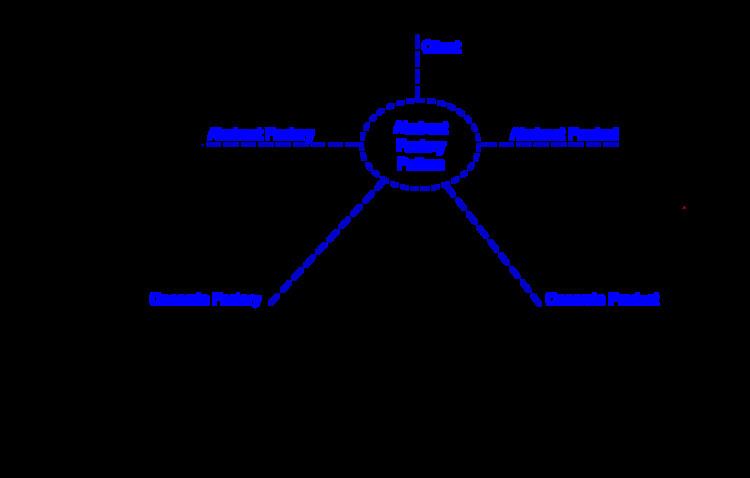 | ||
The abstract factory pattern provides a way to encapsulate a group of individual factories that have a common theme without specifying their concrete classes. In normal usage, the client software creates a concrete implementation of the abstract factory and then uses the generic interface of the factory to create the concrete objects that are part of the theme. The client doesn't know (or care) which concrete objects it gets from each of these internal factories, since it uses only the generic interfaces of their products. This pattern separates the details of implementation of a set of objects from their general usage and relies on object composition, as object creation is implemented in methods exposed in the factory interface.
Contents
An example of this would be an abstract factory class DocumentCreator that provides interfaces to create a number of products (e.g. createLetter() and createResume()). The system would have any number of derived concrete versions of the DocumentCreator class like FancyDocumentCreator or ModernDocumentCreator, each with a different implementation of createLetter() and createResume() that would create a corresponding object like FancyLetter or ModernResume. Each of these products is derived from a simple abstract class like Letter or Resume of which the client is aware. The client code would get an appropriate instance of the DocumentCreator and call its factory methods. Each of the resulting objects would be created from the same DocumentCreator implementation and would share a common theme (they would all be fancy or modern objects). The client would only need to know how to handle the abstract Letter or Resume class, not the specific version that it got from the concrete factory.
A factory is the location of a concrete class in the code at which objects are constructed. The intent in employing the pattern is to insulate the creation of objects from their usage and to create families of related objects without having to depend on their concrete classes. This allows for new derived types to be introduced with no change to the code that uses the base class.
Use of this pattern makes it possible to interchange concrete implementations without changing the code that uses them, even at runtime. However, employment of this pattern, as with similar design patterns, may result in unnecessary complexity and extra work in the initial writing of code. Additionally, higher levels of separation and abstraction can result in systems that are more difficult to debug and maintain.
Definition
The essence of the Abstract Factory Pattern is to "Provide an interface for creating families of related or dependent objects without specifying their concrete classes.".
Usage
The factory determines the actual concrete type of object to be created, and it is here that the object is actually created (in C++, for instance, by the new operator). However, the factory only returns an abstract pointer to the created concrete object.
This insulates client code from object creation by having clients ask a factory object to create an object of the desired abstract type and to return an abstract pointer to the object.
As the factory only returns an abstract pointer, the client code (that requested the object from the factory) does not know — and is not burdened by — the actual concrete type of the object that was just created. However, the type of a concrete object (and hence a concrete factory) is known by the abstract factory; for instance, the factory may read it from a configuration file. The client has no need to specify the type, since it has already been specified in the configuration file. In particular, this means:
Class diagram
The method createButton on the GUIFactory interface returns objects of type Button. What implementation of Button is returned depends on which implementation of GUIFactory is handling the method call.
Pseudocode
It should render a button in either a Windows style or Mac OS X style depending on which kind of factory was used. Note that the Application has no idea what kind of GUIFactory it is given or even what kind of Button that factory creates.
interface Button is method paint()interface GUIFactory is method createButton() output: a buttonclass WinFactory implementing GUIFactory is method createButton() is output: a Windows button Return a new WinButtonclass OSXFactory implementing GUIFactory is method createButton() is output: an OS X button Return a new OSXButtonclass WinButton implementing Button is method paint() is Render a button in a Windows styleclass OSXButton implementing Button is method paint() is Render a button in a Mac OS X styleclass Application is constructor Application(factory) is input: the GUIFactory factory used to create buttons Button button := factory.createButton() button.paint()Read the configuration fileIf the OS specified in the configuration file is Windows, then Construct a WinFactory Construct an Application with WinFactoryelse Construct an OSXFactory Construct an Application with OSXFactory